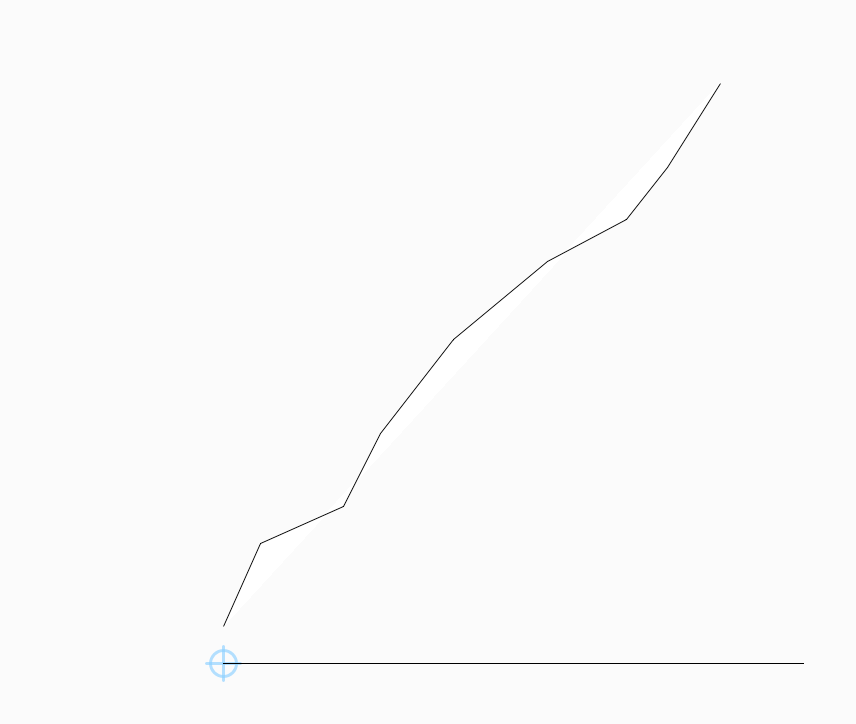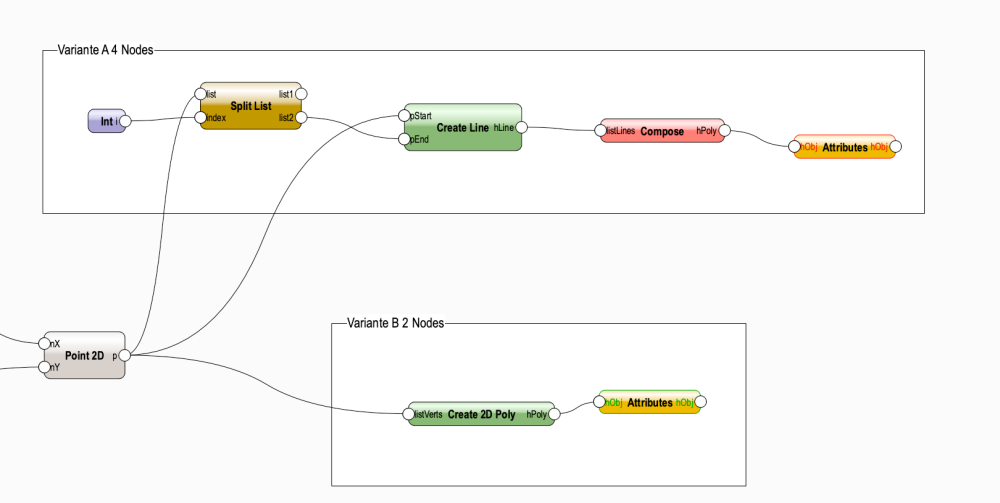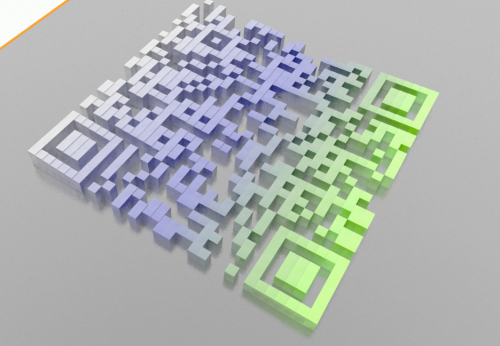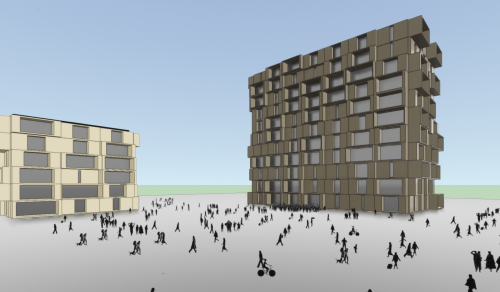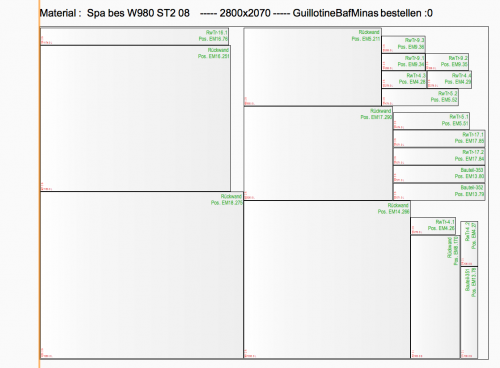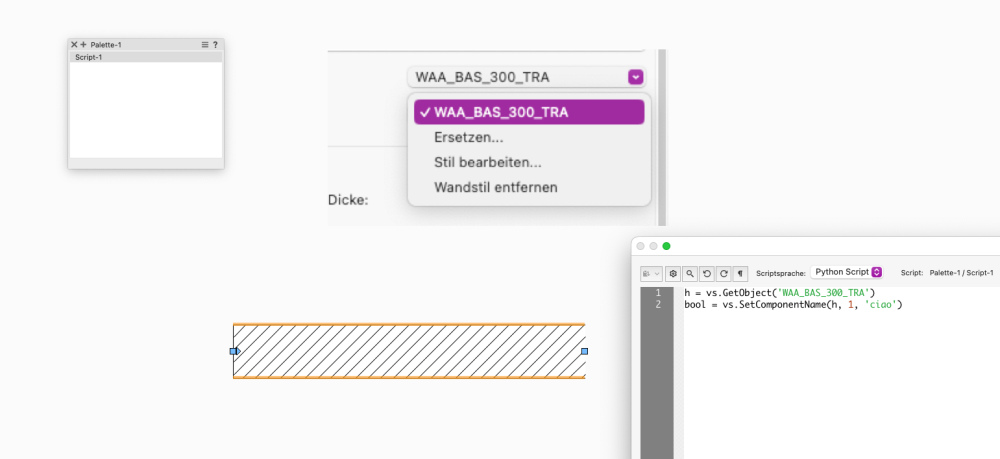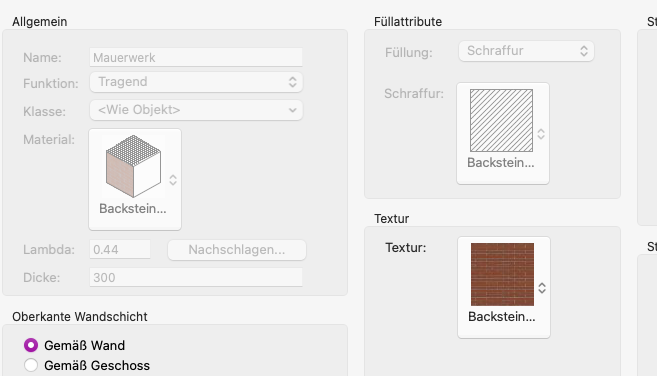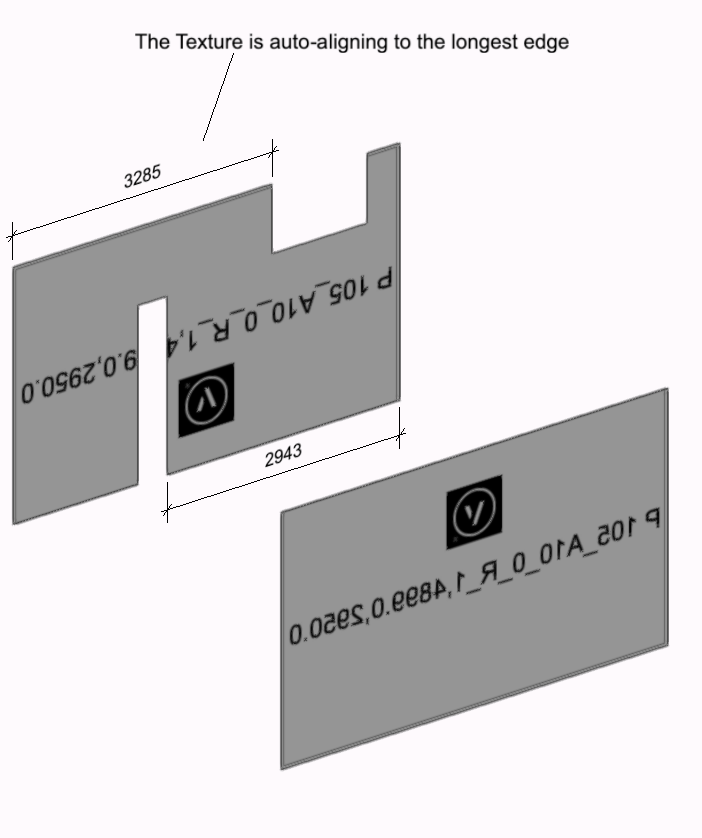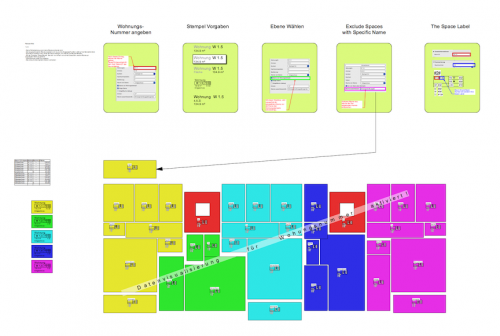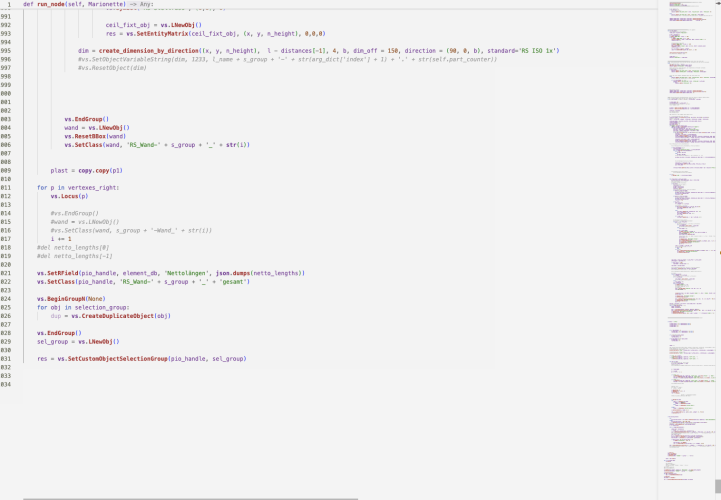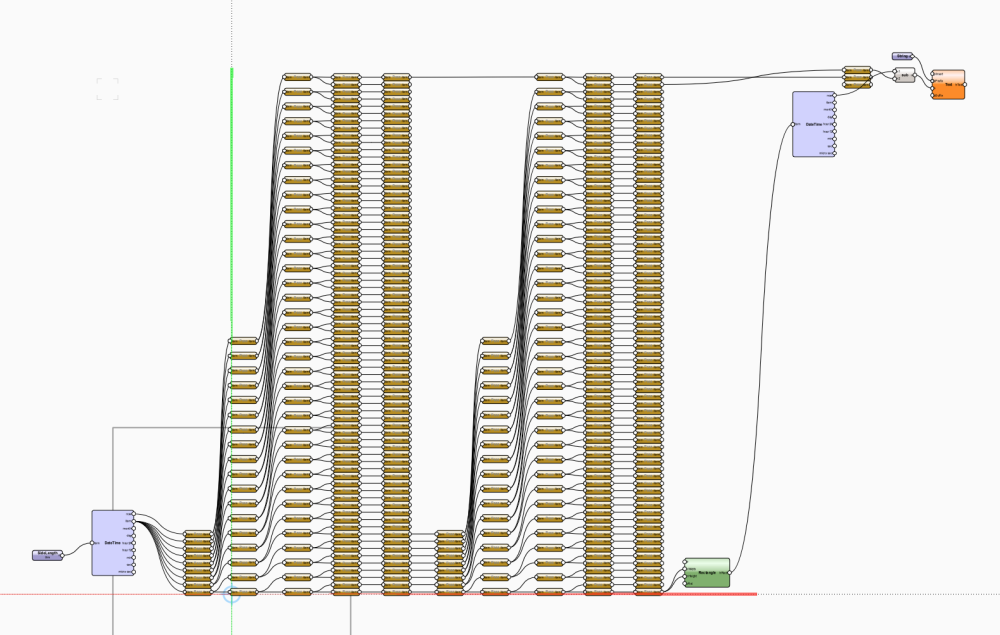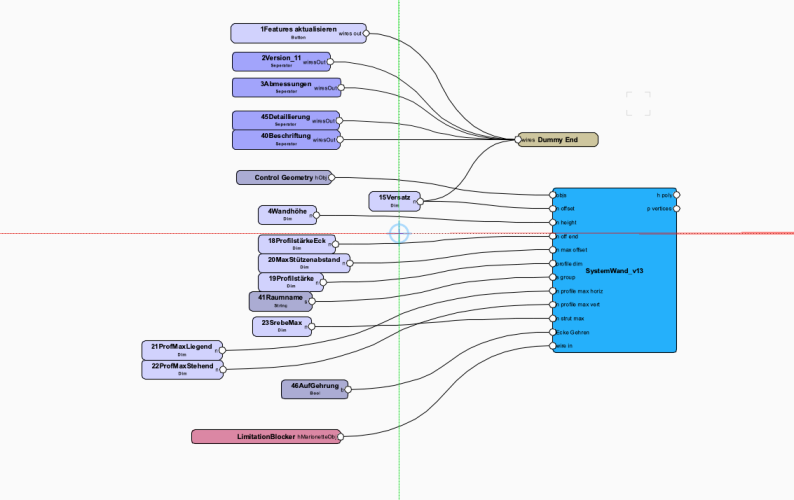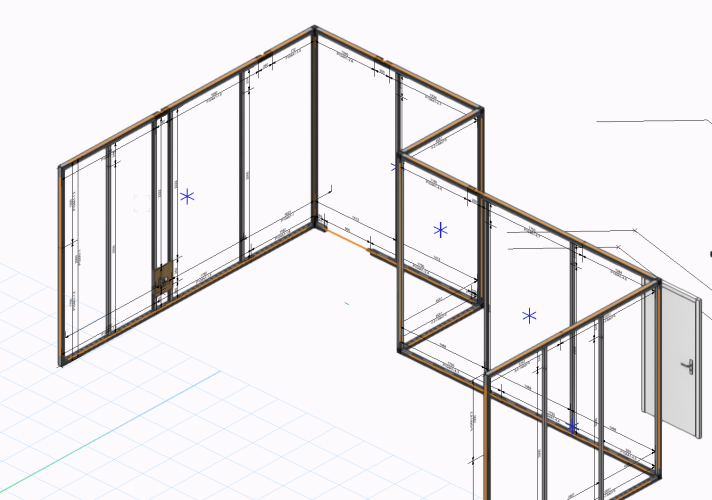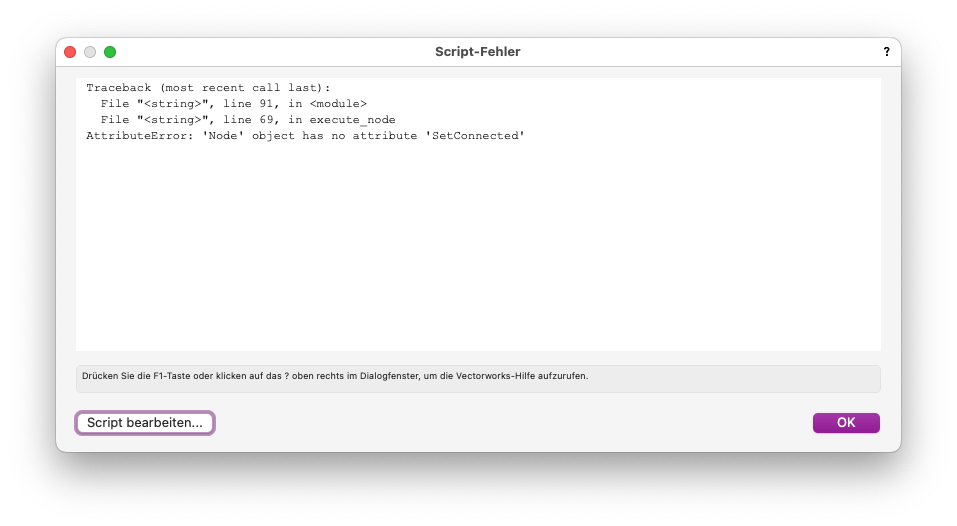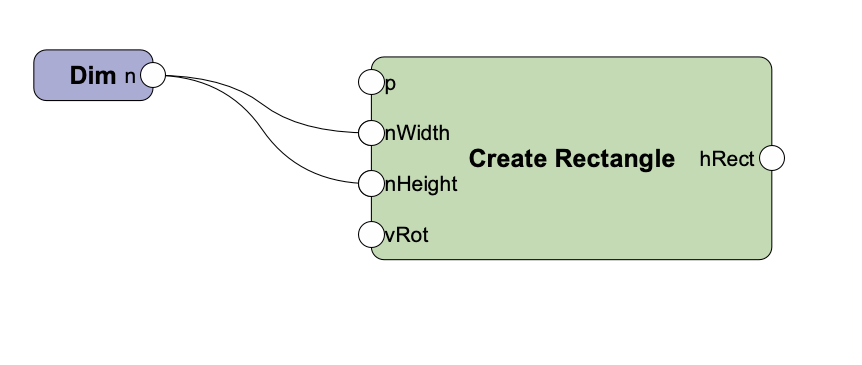-
Posts
639 -
Joined
-
Last visited
Content Type
Profiles
Forums
Events
Articles
Marionette
Store
Everything posted by DomC
-
Got it vs.SetDLSeparation(separationDistance)
-
Hi What i am trying to do is, change tool settings by script. The Following approaches i try: 1. SetSavedSetting() This works, but it seems it writes to the xml memory. And while closing Vectorworks the settings are wrote back to the file. Also i can set every setting i want as Example vs.SetSavedSettings('foo', 'bar', 100) It will store that setting 2. Second approach Writing the xml file. Which also works. It writes the value with my example. But after closing Vectorworks it will overwrite with the tool setting. any ideas? import os import xml.etree.ElementTree as ET # Hauptskript user_app_settings = vs.GetFolderPath(-15) tool_settings_file = os.path.join(user_app_settings, 'SavedSettings.xml') s_dialog = 'Einstellungen optimieren' #res = vs.YNDialog(s_dialog) import xml.etree.ElementTree as ET def modify_nested_xml_value(file_path, parent_tag, key, new_value): # Parse the XML file tree = ET.parse(file_path) root = tree.getroot() # Suche nach dem übergeordneten Tag und dann nach dem spezifischen Element innerhalb davon parent = root.find(f".//{parent_tag}") if parent is not None: element = parent.find(key) if element is not None: element.text = str(new_value) # Setze den neuen Wert # Speichere das aktualisierte XML zurück in die Datei tree.write(file_path, encoding="UTF-8", xml_declaration=True) vs.Message(f"Updated '{key}' under '{parent_tag}' to '{new_value}' in {file_path}") parent_tag = "DoubleLinePreferences" key = "Separation" new_value = "19" # Neuer Wert für Separation modify_nested_xml_value(tool_settings_file, parent_tag, key, new_value) vs.SetSavedSetting('DoubleLinePreferences', 'Separation', 20) res = vs.GetSavedSetting('DoubleLinePreferences', 'Separation') vs.AlrtDialog(str(res))
-
The node is called color input not color rgb Normally the issue of disappearing objects it the 2D 3D Content that a PIO or a Symbol can have (do you have a PIO?) It also depends if you have screen plane or layer plane as default, where your 2D Objects are places inside a PIO. For better control of where Planar Objects are placed you can use Set Planar ref (0 is screen plane and will be 2D Component of PIO) or set component group. Also discussed here.
-
1. The Compose node uses a Menu-Command. It works as long as it is not used inside a PIO Object. The reason why it does not work is, that you do not create any lines which you could compose. Lines: 2. You try to create lines with start 0.0 and end 350.0. Instead you should insert a point (0.0,0.0) at start and end(350.0,350.0) as Example. 3. You have a list of points in the right order. You could create directly a polygon with the node "Create 2D Poly" Here two Variants to create the polygon. I would choose Variante B it the rest of the network do not need lines somewhere. Just the poly This two Rectangles creates the same Polygon I mean 4 Nodes agains one single nodes which does the same (I counted the Attribute node in the Screenshot)
-
Version 1.0.0
13 downloads
This node is the end of boring QR codes that anyone can make. With this node, the creative designer creates their own QR codes. There are endless design possibilities. But be careful: at some point, the QR code may no longer be readable by your smartphone. How it works: Enter the text (e.g., URL link) in the info palette, press Enter > done. Have fun with it! How it works: Enter the text (e.g., URL link) in the info palette, press Enter > done. Have fun with it! -
Version 1.0.0
23 downloads
This is an older but still fantastic marionette. The thing which is a little newer is the version of the poeple Crowd polygon which i never shared i think. With the following Features: 1. One big Focus Point where people crowding (Entrance, Food Track etc.) 2. Smaller Focus Points where people talk together etc. 3. The Script gets different symbol folders. It collects from a folder symbols in the focus arreas (waiting people, sitting people as Example) 4. Ant a different Folder for People which moving between the focus points To Make your people layout, you could combine more than one PlugIns with different settings. I think you need one PlugIn per Special Focus. i think this could also be used for trees, cows and other living objects. -
With look you mean the Attributes or the algorithm? 1. Well the Attributes depends on the classes and the classes depends on the different name of the matrial you have in your list. If you create the classes first, you can define the attributes before the script runs. 2. The Packing algorithm and settings of the PIO defined in the pio. You could test your settings first with a smaller list by input a smaller copy of your worksheet. And then for final calculation link your real-list. While it is a plug in you can only change one parameter at a time. It will recalculate after every change. Also maybe sort your list by materials. So you can work in etapes. 3. To prevent this. For your usecase you could double click the PIO, edit the script. copy the network. Then close file and reopen (because recalculation of script could take a while) then paste the script on the construction layer. Here you can change as many inputs values as you want and run the network manually. The script should run ourside the PIO without modifications, just delete the big rectangle in the background after creation
-
@Zuzzla Thanks for noting that. After all this is right. The node uses the key varName which represent the internal name. the key 'text' represents the visible parameter name. Because i use "if name in varName" and not name == varName it worked for me while i always not check with the full name. However the "text" key was the right one to use.
-

VS:SetComponentName doesn't change componentname
DomC replied to matteoluigi's topic in Python Scripting
If so i would not just loop the walls in drawing and changing the same stile hundreds of times. I would get the walls and collect the used style names. Then i would eliminate duplicate names and loop the style names. Or collect the Resources directly. Beside that, i would not change object swhich i collect with "ForEachObject" directly in the "ForEachObject" callback function. I would use "ForEachObject" always as a read only manipulation. something like this: wall_style_names = [] def get_objects(h): wall_style_name = vs.GetWallStyle(h) '''hinzufügen, falls nicht schon in der Liste''' wall_style_names.append(wall_style_name) if wall_style_name not in wall_style_names else None vs.ForEachObject(h,('T=WALL')) for wall_style_name in wall_style_names: wall_style_handle = vs.GetObject(wall_style_name) '''security to be sure just manipulating wall styles''' if vs.GetTypeN(wall_style_handle) == 127: #Do your component renaming code here -

VS:SetComponentName doesn't change componentname
DomC replied to matteoluigi's topic in Python Scripting
Short Test. It works with an unstyled Wall. h = vs.FSActLayer() bool = vs.SetComponentName(h, 1, 'ciao') For a Styled Wall, it works by get handle of wall style and set it there: -

VS:SetComponentName doesn't change componentname
DomC replied to matteoluigi's topic in Python Scripting
I think it is not possible the change the component name of a styled wall. Even manually we are not able to do so. Text is greyed out -
1. Table with output boards would be possible by enhancing the script. But never heard before of that because you count the needed boards very fast. Also on your file. You need less than one board for every material. For what usecase this would be needed, would it save time or is it prevent misscounting? 2. Graphical Attributes. For ever Material autmatically a class is created and you can just change the class style to change the attributes. Note you have some Workpieces without a Material You have a class for Platten (Boards) and Teile (Parts). For the Text you had a Text-Style, but you deleted. Take it back from the Template. Then you can set Text Size and Text centered etc. Best looking Optimizing Software ever 🙂
-

VS:SetComponentName doesn't change componentname
DomC replied to matteoluigi's topic in Python Scripting
Not near my Mac. I Wonder if you handle the style or the Wall. -

How to assign a texture to a 3D object (Solved)
DomC replied to Carles Olle's topic in Python Scripting
was not able to wait and solved it with a funktion: def get_longest_direction(final_contour): # Define the contour points # Calculate the centroid (center) of the contour centroid_x = sum(point[0] for point in final_contour) / len(final_contour) centroid_y = sum(point[1] for point in final_contour) / len(final_contour) # Initialize variables to keep track of the longest edge and its direction max_distance = 0 direction = '' longest_edge_points = () # Iterate over the points to calculate x and y distances between consecutive points for i in range(len(final_contour)): # Get the current point and the next point in the list (wrapping around at the end) x1, y1 = final_contour[i] x2, y2 = final_contour[(i + 1) % len(final_contour)] # Calculate the x and y distances x_distance = abs(x2 - x1) y_distance = abs(y2 - y1) # Check if x distance is the longest so far if x_distance > max_distance: max_distance = x_distance direction = 'x' longest_edge_points = ((x1, y1), (x2, y2)) # Check if y distance is the longest so far if y_distance > max_distance: max_distance = y_distance direction = 'y' longest_edge_points = ((x1, y1), (x2, y2)) # Determine the position of the longest edge relative to the centroid (x1, y1), (x2, y2) = longest_edge_points # Check the relative position of the longest edge if direction == 'x': if centroid_y > y1: # Edge is below the centroid position = 'below' else: # Edge is above the centroid position = 'above' elif direction == 'y': if centroid_x > x1: # Edge is to the left of the centroid position = 'left' else: # Edge is to the right of the centroid position = 'right' return position longest_direction = get_longest_direction(final_contour) '''and for the mapping this code''' vs.SetDefaultTexMapN(rec, 3, 0) vs.SetTextureRefN(rec, texRef, 0, 0) # flip horizontal #vs.SetObjectVariableInt(rec, 540,1) vs.SetTexMapBoolN(rec, 3, 0, 7, False) vs.SetTexMapBoolN(rec, 3, 0, 5, False) #texture part, overall is 3. Selector: init:1, flip:2, repH:3, repV:4, long edge:5, worldZ:6, auto align:7 angle = 0 if 'links' in c: if longest_direction == 'left': angle = -90 * (pi / 180) if longest_direction == 'right': angle = 90 * (pi / 180) elif longest_direction == 'above': angle = 180 * (pi / 180) if 'rechts' in c: vs.SetTexMapBoolN(rec, 3, 0, 2, True) if longest_direction == 'left': angle = -90 * (pi / 180) if longest_direction == 'right': angle = 90 * (pi / 180) elif longest_direction == 'above': angle = 180 * (pi / 180) vs.SetTexMapRealN(rec, 3, 0, 4, angle) -

How to assign a texture to a 3D object (Solved)
DomC replied to Carles Olle's topic in Python Scripting
Hi Searched the Forum but did not found another thread about the textur mapping: 1. I have attach a textur on an extrude. The Extruse can have 4 or more vertex points of a 2D Poly 2. Starting point is alsways the same and also the direction is known. Main question is, how to prevent texture mapping from aligning to the longes vertex of the face? I use as example this, to rotate, which works. Also Flipping is working vs.SetTexMapRealN(rec, 3, 0, 4, angle) I tried this but this does not change the mapping vs.SetTexMapBoolN(rec, 3, 0, 7, False) vs.SetTexMapBoolN(rec, 3, 0, 5, False) What i do now is, i get the bound in x and y (view on the face) and then rotate by 90 degrees if the y is bigger than y so texture would stay horizontal aligned to the world coordinates , which works for rectangular shapes. I now have to deside if i analyse the shape (if shape is not rectangular) for the longest edge or if there would be an existing function for that. My testing code looks like this: vs.SetDefaultTexMapN(rec, 3, 0) vs.SetTextureRefN(rec, texRef, 0, 0) # flip horizontal #vs.SetObjectVariableInt(rec, 540,1) vs.SetTexMapBoolN(rec, 3, 0, 7, False) vs.SetTexMapBoolN(rec, 3, 0, 5, False) #texture part, overall is 3. Selector: init:1, flip:2, repH:3, repV:4, long edge:5, worldZ:6, auto align:7 angle = 0 ''' if 'links' in c: if breite < h: angle = 90 * (pi / 180) else: if len(final_contour) < 5: #Rechteck angle = 180 * (pi / 180) else: angle = 180 * (pi / 180) ''' if 'rechts' in c: vs.SetTexMapBoolN(rec, 3, 0, 2, True)#flip vertical axes '''texture is aligning not to the bounds it aligns to single edges of object''' if breite < h: angle = 90 * (pi / 180) else: if len(final_contour) < 5: #Rechteck #vs.AlrtDialog(tex_name) angle = 180 * (pi / 180) else: #vs.AlrtDialog(tex_name) angle = 0 vs.SetTexMapRealN(rec, 3, 0, 4, angle) #vs.SetTexMapBoolN (rec,3,0,3,True) #vs.SetTexMapBoolN(rec, 3, 0, 2, False)#flip vertical axes #vs.SetTexMapBoolN(rec, 3, 0, 2, True)#flip horiz axes res = vs.SetEntityMatrix(rec, (ps[0], ps[1], 0), 90,0,b) vs.SetClass(rec, c) Short movie which shows, that the texture changes alignment if another edge is getting the longest edge. Auto-Texture-Align.mp4 -
Yes it should be possible. If you edit the script you find the string input for the feald name of the area Since 2024 it is a new field (MeasuredNetAreaNum) you can see the right field names with a worksheet as example. In past i did used other fields but i think i never used the grossArea (BruttoFläche) Field. The Field MeasuredNetAreaNum is a special Field which is compatible with Vectorscript and has not to be parsed from a string to a number which created so many troubles in past version (while the biggest time consume of the script was the game, how to convert a Text like "1.045,186m2" (which can be different for every document settings, and country settings of the computer) in a number like 1045.2?) Just to say, why i recommend to use one of the field with ... Num at the End. This can be converted to a Number in a reliable way by the custom Marionette Node Str2Num from the Wohnungsstempel Marionette.
-
Hi Create Additional (dynamic or non dynamic Field) in the Tag: 1. Edit Record Format and create new field 2. Edit Symbol and link new Textfield to that new Record Field 3. Edit the Script and link an input or a computed value to that record field Exit the Script Style and then you should have a new input Field. Importand. Edit the right Symbol, which you use in the Wohungsstempel.
-

Create a texture resource from image in a folder
DomC replied to jonasfehr's topic in Python Scripting
I'm as happy as a little child right now! I just made a short movie to show what I can use this for. It allows practically a real-time exchange of wall textures, which can be accessed from a shared location or via web API. The customer can see their printable areas directly with a pre-prepared image file, and I can visualize his demands in real-time. REAL-TIME-VISUALISATION :-))) import image texture.mp4 -

Create a texture resource from image in a folder
DomC replied to jonasfehr's topic in Python Scripting
After again i have to use an import for textures. I searched the script reference and found this one: def vs.SetTextureSize(texture, newSize): return None I would say it does exactly what we searched for. size in inch. So if we want the texture should have 1000mm in real world we use newSize = 1000 / 25.4 -
I analyzed that several times with many Networks from users. The more nodes the slower. Do not know, if it depends of "unpurged and many lines" or on the fact, that every node has a geometry representation, Circles and polylines for graphical representation and generating the script. My workflow for PIOs for professional usage is, to have just a few nodes. And one node contains the PIOs main-code. This can be 1000 or 3000 lines. if i export this as a python file it has 1326 lines. The PIO needs 2 seconds to execute. If i export this 500 nodes, it has 29000 lines. Those are just pass nodes. Execution Time of this PIO is 0.07 seconds. So executing 10 times (290'000 lines of code) is not even a second execution of the first example with 1300 lines, needs about 2seconds depending on the size and number of linkes objects etc. Just to show, there is not direct relation between number of lines and speed. I also think about optimizing. But if we say, one should optimize the network, so we have 10times less lines. It would be the development investment on the wrong side maybe. It would sound maybe for the world to say we reduces size of script 10 or 20 times. But is is the wrong priority to focus improvements on the number of created code-lines by marionette. It maybe could result in longer waiting time for your example, because the intelligents to create the code maybe needs then more time. Just want we think clever about where someone would invest developing time. We have maybe the same wishes and should not judge about the right solution. At the End, the wish speed by copy or import objects on the file. And we want security that a deleted node or wrecked graphical network does not change the script. I think the direction of improvement should be, to be able to dump/cache the finished script in a text-based form (one node, one resource, one stile etc.) So your 1500 nodes don't need to be part of your pio anymore. Nodes are good to easy build the script or easy edit update it. Thats why we love graphical scripting. But to use the PIOs in our models in a fast and 100% reliable way, nodes are not needed. Also i am pretty sure, those are producing your speed issue not the number of coded lines.
-
It is a copy of the node content in that path and the node run without it and user get not messages about that link. At the time you edit the node code also nothing happens if the resource not exists, if the resource exists it will update if the resource is newer than the code inside the node. Only if you exit the node it will report, that the resource is not existing and it tries to create the path. And from this Moment you can edit the Text resource to edit the code. I think this is done, to be able to update the nodes and keep them synced. But a note will not update automatically. Because changing a node without control could break existing scripts. So it is a good think to keep nodes synced if needed or triggered manually. But if you developing a big code content of a node and need to run tests ever 30 seconds the workflow with a direct "import module" is better till the script reached a releasable state. The Import would throw an error a machine which is not linked to that path. So this is just a developing method. Then you go to the #COMMAND;REFFILE; method. Also there is the Method #COMMAND;READONLYREFFILE; with protect nodes from editing. And just read the file.This is how the standard-nodes are created. It is thinkable to download and install the module through the modul installer of Marionette or the Marionette own installer inside the node from Vectorworks Reprository or from a python wheel url. like we import pillow, numpy etc.
-
If you have luck a tool like ChatGPT can simplify your code or can help optimizing it. But we can not read take the output of those AI tools directly. Still someone have to verify the output or have to know what to do if there is still "a bug" 🐞 Lets make a spontan test. Marionette is drawing a rectangle. A very easy one. I export as a script: 160 Lines (cant post the code directly here) ChatGPT. I ask for making it more compact: Sounds good. Result 104 lines. But i do not except this is faster. Or even the first version is really measurable slow just because of the code BTW, that faild and the "optimized" script do not run, while the original script runs:
-
You can refer to a "text" resource, which is you node definition code like this at the Beginning of the node: #COMMAND;REFFILE;[UsrLib]/Defaults\Marionette\DomC\SystemWand_v13.py; @Marionette.NodeDefinition class Params(metaclass=Marionette.OrderedClass): The system detects if you edit last in Vectorworks via Node definition or via editor in the external file and will update. But it is not a direct link to an external module. But will work if it is disconnected to the external tool. The negative think about this, we (or i do not know) how to update the node without doubleclick and exit the node. So my beste Workflow to edit external code of a Marionette Node is as following: example: @Marionette.NodeDefinition class Params(metaclass=Marionette.OrderedClass): # APPEARANCE # Name this = Marionette.Node('SystemWand_v13') this.SetDescription("") # Input Ports objs = Marionette.PortIn(None) n_offset = Marionette.PortIn(0) n_height = Marionette.PortIn(3000) n_off_end = Marionette.PortIn(68) n_max_offset = Marionette.PortIn(750) profile_dim = Marionette.PortIn(30) s_group = Marionette.PortIn('') n_profile_max_horiz = Marionette.PortIn(2000) n_profile_max_vert = Marionette.PortIn(3000) n_strut_max = Marionette.PortIn(3000) b_Gehrung = Marionette.PortIn(True, 'Ecke Gehren') # 0 = Einlauf 90, 1 = Fallstrang 2x45 wire_in = Marionette.PortIn(False) # OIP Controls # Output Ports h_poly = Marionette.PortOut() p_vertices = Marionette.PortOut() # BEHAVIOR this.SetLinksObjects() # this.SetListAbsorb() def RunNode(self): import rs.systemwandv13 from imp import reload reload (rs.systemwandv13) rs.systemwandv13.run_node(self, Marionette) So i start normal and then i import my exernal code in the RunNode. Maybe it is also possible to import the complete node code but did not tried(needed) this yet. Important is to reload because of caching. This is a very good method for fast developing without refreshing nodes manually. And then the external module: def run_node(self, Marionette): # import modules from datetime import datetime import json import vs import math import copy from math import radians, sin, cos #from inspect import currentframe, getframeinfo #cf = currentframe() selection_group = [] error_log = [] # parent pio infos pio_handle = vs.Handle(Marionette.parametric_handle) pio_parent = vs.GetParent(pio_handle) pio_parent_type = vs.GetTypeN(pio_parent) #... here you can code everything you also can code inside the node. Hope that helps. Do not know what you want to do. I think the speed of Marionette not really depends of inefficient code. It is maybe the Number of nodes which makes it slower maybe by duplicate or copy/paste an Object. But maybe it is i am sure about this.
-
Aha, then you could use this one. I like this idea. Also for myself i have tons of scripts and this one can help execute them fast with a menu command and one single click. Thinkable ToDoes: - What would be cool, a palette with a searchable list browser or similar. I was never able to create propper popup with search bar - maybe support for sub-folders in module directory import os import importlib dialog_dict = {} def get_py_files(directory): # Traverse the directory tree and collect all .py files without their extensions py_files = [] for root, dirs, files in os.walk(directory): for file in files: if file.endswith(".py"): # Add the file name without the .py extension to the list py_files.append(os.path.splitext(file)[0]) return py_files def run_palette(directory=''): # Set the directory to search for Python scripts vs.PythonSetSearchPath(directory) # Set the search path for Python modules dialog_dict['res_names'] = get_py_files(directory) # Get all .py files id_dict = {} def dialog_main(): def CreateDialog(): # Create the main dialog layout dialog = vs.CreateLayout('Scripte Schnellzugriff', False, 'OK', 'Abbrechen') last_item_id = 10 act_item_id = last_item_id + 1 vs.CreateStaticText(dialog, act_item_id, 'Klicke auf die gewünschte \rFunktion.\r', -1) vs.SetFirstLayoutItem(dialog, act_item_id) # Create static text items for each script name for res_name in dialog_dict['res_names']: last_item_id = act_item_id act_item_id += 1 vs.CreateStaticText(dialog, act_item_id, res_name, -1) vs.SetItemClickable(dialog, act_item_id, True) vs.SetBelowItem(dialog, last_item_id, act_item_id, 0, 0) id_dict[str(act_item_id)] = res_name # Add a spacer at the end last_item_id = act_item_id act_item_id += 1 vs.CreateStaticText(dialog, act_item_id, ' ', -1) vs.SetBelowItem(dialog, last_item_id, act_item_id, 0, 0) return dialog def DialogHandler(item, data): if 10 < item < 10000: dialog_dict['func_id'] = str(item) return 1 dialog = CreateDialog() result = vs.RunLayoutDialogN(dialog, DialogHandler, False) == 1 return result result = dialog_main() if result: func_id = dialog_dict.get('func_id', False) func_name = id_dict[func_id] if func_id: # Dynamically import and execute the selected module module = importlib.import_module(func_name) directory_with_pytho_modules '/Volumes/SD_Card/Dropbox/Entwicklung/python_scripte' # Run the palette function to start the dialog run_palette(directory = directory_with_python_modules)




